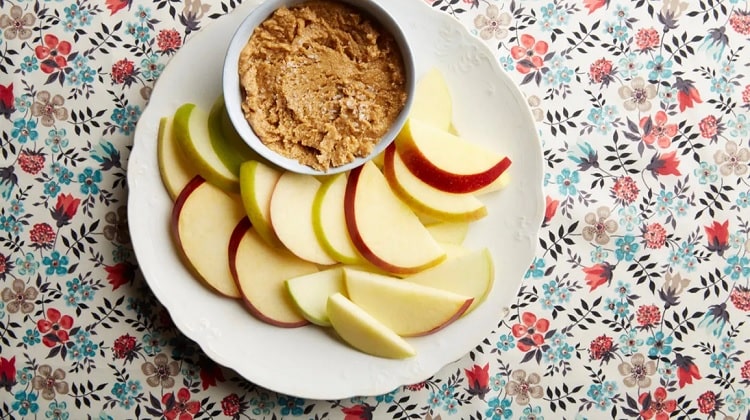From Total Carbs to Net Carbs: How to Calculate Carbs on a Keto Diet
Low-carb diets like the keto diet can be challenging to follow because of their restriction on many foods. While counting carbs can be beneficial for achieving ketosis, there is something called net carbs, which have gained popularity in recent years. Calculating net carbs and consuming foods based on it are claimed to provide you with various health advantages.
People on keto know that limiting carbs to below 50 g per day helps them utilize fat for fuel rather than carbs. But there is an effective way to facilitate the process and help with weight loss goals. All you have to do is focus on the net carbs of foods and plan your diet based on the net carbs.
When you shift your focus toward net carbs, you’ll be able to maintain your daily carb limit on a keto diet. There is a major difference between total carbs and net carbs. You may wonder what these net carbs are and how to find the net carbs of the food you eat. This article briefs you in detail about net carbs and the method of calculating them.

What Are Exactly Net Carbs?
The carbs you consume supply energy in the form of calories. Carbs are of different kinds, including fiber, starch, and sugar alcohols. They are one of the key macros that provide fuel and support various bodily functions. Net carbs are digestive carbs that can be absorbed by your body into your bloodstream. The absorption of carbs by your body has an impact on your blood sugar levels and insulin response.
Net carbs include both simple and complex carbs that can be digested by your body using enzymes in the small intestine. Simple carbohydrates are made up of one or two linked sugar units and are present in the following foods:
- Fruits
- Milk
- Honey
- Coconut sugar
- Vegetables
- Syrup
- Sugar
Complex carbohydrates are composed of many connected sugar molecules and are found in:
- Pasta
- Cereals
- Corn
- Beans
- Legumes
- Starchy vegetables
When you consume a food that contains carbohydrates, your body begins to break down the carbs into individual sugar units, which your body can absorb. However, certain carbohydrates pass through your body undigested and have no impact on blood sugar levels. Fiber and sugar alcohols are such carbs that your body can’t digest them completely. This is why they are excluded from the calculation of net carbs.
Why Count Net Carbs On a Keto Diet?
Keto diets have gained popularity due to the effective results they provide in the short term. When you are on keto, you are recommended to limit your carb consumption to between 20-50 g every day. Keto diets encourage the consumption of low-carb, moderate-protein, and high-fat foods to achieve ketosis.
This step to achieve ketosis stimulates your body to burn fat for energy rather than carbs. In this way, keto diets increase fat burning and reduce fat accumulation. People are shifting toward this weight-loss strategy to get better results. While adopting the keto diet, you should count on your carbs to manage carb consumption and maintain ketosis.
The best way to include some healthy carbs in your meals while staying in ketosis is to count net carbs while on the keto diet and eat foods based on the calculation. Net carbs enable you to include fiber-rich, nutrient-dense fruits and vegetables in your keto diet without compromising your daily keto carb targets.
When on a ketogenic diet, keeping track of net carbs is crucial since an increase in net carbs may cause blood sugar levels to spike and impede ketosis. At the same time, staying on ketosis using net carbs can be different for every individual based on their physical activity. Some people who exercise vigorously on a regular basis can be able to maintain ketosis while consuming more carbs.
How to Calculate Net Carbs On a Keto Diet?
As a first step in calculating net carbs, you need to pay attention to the nutrition label. Most foods you purchase from the market contain a label with nutritional information. You can also find the nutritional facts of food by using the USDA website. It is simple to calculate net carbs by following the below steps:
- From the nutrition label, you should note down the total carbohydrates, fiber, and sugar alcohols.
- Then, you should subtract the amount of dietary fiber and sugar alcohols from the total carbohydrates to get the net carbs of the food.
The formula used in the calculation of net carbs is given below:
Net Carbohydrates = Total Carbohydrates – Fiber – Sugar Alcohols.
For instance, a 175-g serving of peach contains 17g of total carbs and 3g of dietary fiber. When you use the above values in the formula, you get 14 g of net carbs. You can use this method to figure out the net carbs of any food you consume on keto.
How Many Carbs Are Allowed on the Keto Diet?
Everyone has a different carb restriction on the keto diet based on their activity level. This is why it is best to understand your body’s requirements before adopting any diet. When you understand the rate at which your body burns calories, you’ll be able to plan your carb intake based on that to achieve ketosis. While some people may need to eat fewer carbohydrates to support ketosis, others may be able to maintain it even when consuming more.
Most ketogenic diets advise keeping your daily net carb intake between 15 and 30 grams, or 5 and 10% of total calories. If you are someone who exercises hard four to five times a week, you can be able to maintain ketosis while eating more carbohydrates. It is advisable to plan your net carbs based on your activity level and keto diet.
How Can You Utilize Net Carbs for A Keto Diet?
Net carbs can be useful in maintaining ketosis while following a keto diet. As it does not include fiber and sugar alcohols, you can enjoy the nutritional advantages of these healthy carbohydrates without having any impact on your keto. Let’s examine the beneficial carbs that can be introduced in moderation to maintain health when following a ketogenic diet.
Fiber
Fibers are indigestible carbs that provide you with a variety of health advantages. The USDA suggests consuming 14 g of dietary fiber for every 1000 calories of food. The daily recommended amount of fiber for men and women is 38 g and 25 g, respectively. Fiber helps to lower cholesterol levels and control blood glucose levels, thus reducing the risk of heart disease and type 2 diabetes.
Even though fiber does not cancel out carbs, it can delay your digestion and reduce fat storage. High-fiber foods like legumes and whole grains increase feelings of satiety and prevent excess calorie intake, making them suitable for weight loss.
Fiber also helps with your digestion and normalizes bowel movements, reducing the chance of constipation. When you take fiber in moderation, you can maintain your ketosis and improve your overall well-being.
Sugar Alcohols
Your body does not completely digest sugar alcohol. While sugar alcohols add sweetness to foods, it does not actually cause spikes in blood sugar levels. Based on the sugar alcohol you use, you can maintain your daily net carb intake and stay on keto. Three varieties of sugar alcohols, like erythritol, stevia, and monk fruit, can be added to your keto diet.
These compounds are very low in carbs, making them suitable for the keto diet. Specifically, erythritol is a naturally occurring sugar alcohol that can be found in fruits like watermelon and peaches. When consumed in moderation, these three sugar alcohols can help you stay on keto.
Micronutrients
Your body requires a limited quantity of key micronutrients, such as vitamins and minerals, to maintain all biological functions. These micronutrients are found in a variety of plant-based foods, such as fruits and vegetables.
Even though they are carbs, some fruits and veggies are relatively low in net carbs, making them suitable for the keto diet. You can enjoy the nutritional advantages of these micronutrients while sticking to the ketogenic diet by choosing non-starchy veggies and low-carb fruits to consume.
Your body requires these micronutrients in small levels for increased energy, health maintenance, bone health, growth, and immunity. Micronutrients like vitamin B6, vitamin C, vitamin E, zinc, and magnesium are essential for immune function.
Micronutrient deficiencies can lead to an increased risk of health conditions like anemia, osteoporosis, and cardiovascular diseases. Therefore, including micronutrients in your keto diet can provide you with better results.
Benefits of Counting Net Carbs
Counting net carbohydrates has numerous advantages, some of which are given below:
- The Keto diet is a stringent diet in comparison to other diets. Counting net carbohydrates can assist in incorporating healthy carbs and increase dietary options, making the diet less restrictive. You can consume some nutrient-dense, low-sugar items while adhering to a ketogenic diet if you base your planning on net carbs.
- Being on low-carb diets like the keto diet can cause a drop in your blood glucose and insulin levels, increasing the risk of hypoglycemia. Adding fiber to your diet can reduce your risk of hypoglycemia based on the number of daily net carbs you consume.
- Monitoring your net carbs can encourage a daily fiber intake that is healthy and can help control your blood sugar levels.
Potential Downsides
The calculation method of net carbs is an estimation and may not be accurate all the time. While counting net carbs can prevent low blood sugar in people with diabetes, it may not work well for others to manage blood sugar.
Counting net carbohydrates can also increase the number of sugar-free foods that are sold as low-carb but actually include carbs. When you consume these sugar-free sweets in large quantities, your blood sugar levels may surge, stalling ketosis and weight loss.
People with a history of disordered eating habits should be cautious with counting net carbs. It might be challenging for some people to concentrate on particular macros in their diet. You can use net carbs to gauge your daily carb consumption and adhere to a keto diet plan based on net carbs to prevent yourself from feeling under too much pressure.
Summary
Counting net carbs can help you include additional healthy carbs in your keto diet. When you focus on net carbs, you can improve your glycemic control by eating fiber-rich foods while staying on keto. If you find it hard to calculate the net carb of every food you consume in a day, you can consider keto-friendly tracking apps. These apps can be utilized to create personalized keto-friendly meal plans and keep track of your daily carb intake.
An important point to note in counting net carbs is that the total carbs mentioned on a product’s label in the US and Canada vary from those in other countries. The total carbohydrates mentioned on the product label in other countries usually exclude fiber content. If you are under any medication, you should seek your doctor’s advice before consuming foods on keto based on net carbs.
Faqs
Net carbs indicate the total amount of carbs that are completely absorbed by your body. The amount of fiber and sugar alcohols should be subtracted from the total amount of carbohydrates listed on the nutrition label in order to determine net carbs.
People on the keto diet count net carbs, which do not include fiber. Fiber is a carbohydrate included in total carbohydrates, which is not digested by your body. Net carbs only include carbs that your body can fully absorb.
Counting net carbs of your daily food intake and limiting your daily net carb to below 25 g can help you achieve ketosis. It is best to plan your keto diet based on net carbs to stay in ketosis. If you’re considering total carbs, then you should maintain your total carbs below 50 g per day to maintain ketosis.







